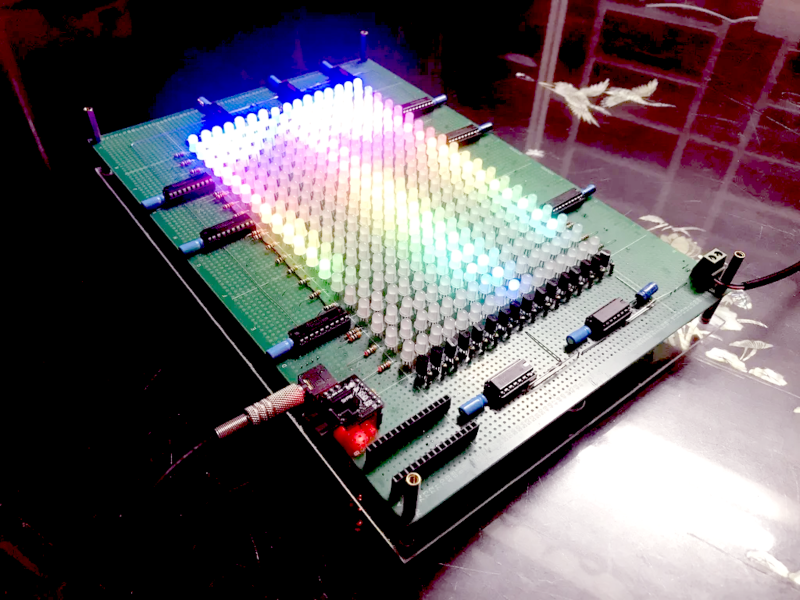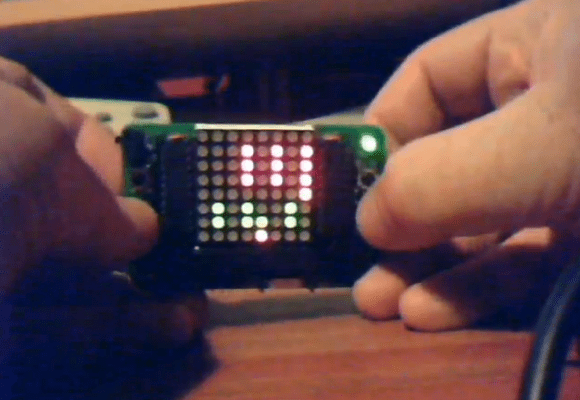24

You would think the hard part about creating a spectrum analyzer using a pint-sized ATTiny85 would be the software. But for [tuenhidiy], we suspect the hard part was fabricating an array of 320 LEDs that the little processor can drive. The design does work though, as you can see in the video below.
The key is to use a TPIC6B595N which is an 8-bit shift register made to drive non-logic outputs. With all outputs on, the driving FETs can supply 150 mA per channel and the device can handle 500 mA per channel peak. At room temperature, the part can go over 1W of total power dissipation, although that goes down with temperature, of course. If you need higher power, there’s a DW-variant of the part that can handle a few hundred milliwatts more.
A fixed-point FFT library does the actual work. The program simply reads samples, processes the FFT, and drives the LEDs through the shift registers.
The construction technique is also a bit interesting as much of the wiring is left over LED leads. We admire the neat work, but we think we’d have had better luck with PCB traces.
Although billed as a spectrum analyzer, a device like this is really more of a music visualizer. If you want a real spectrum analyzer, they have become reasonably cheap. As impractical as the LED grid is for practical output, it beats ping pong balls.
400



